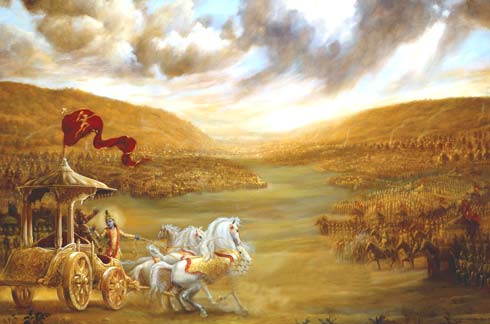Soil
- To remain healthy, plant roots require oxygen, and they receive it from the air spaces in the soil. In over-watered soil, the soil spaces fill up with water and deprive the roots of oxygen.
- When this occurs, the roots may begin to die, and the leaves may yellow or form brown margins.
- Tulasī thrives well in steralized commercial potting soil, such as Unigro or Supersoil.
- Avoid brands that are sawmill by-products, and that list “sludge” (a sewage-treatment by-product) as an ingredient.
- For rich soil with excellent drainage capacity, you can make your own soil mix as follows:
- a. To two parts potting soil, add one part compost, leafmold, earthworm castings or other decomposed organic matter, and one part clean coarse sand, such as masons’ sand. You may substitute perlite or sponge rock for coarse sand. Do not use beach sand, as it has too much salt.
- b. Add one tablespoon of pulverized phosphate rock and one tablespoon of potash rock (granite dust or green sand).
- c. When compost is unavailable, use vermiculite; however, be prepared to give Tulasī more nutrients, as mentioned in the next section.
- It is not a good idea to use soil straight from a garden because the soil may contain disease organisms.
- Do not place earthworms in Tulasī Devī’s pot because they are apt to damage her roots.
- Occasionally, the force of watering may compact the soil. This will hinder the water and the air from penetrating the soil. To allay this, each month turn over the top inch of soil with a small instrument (such as a fork), but be careful not to poke at or upset her roots.














